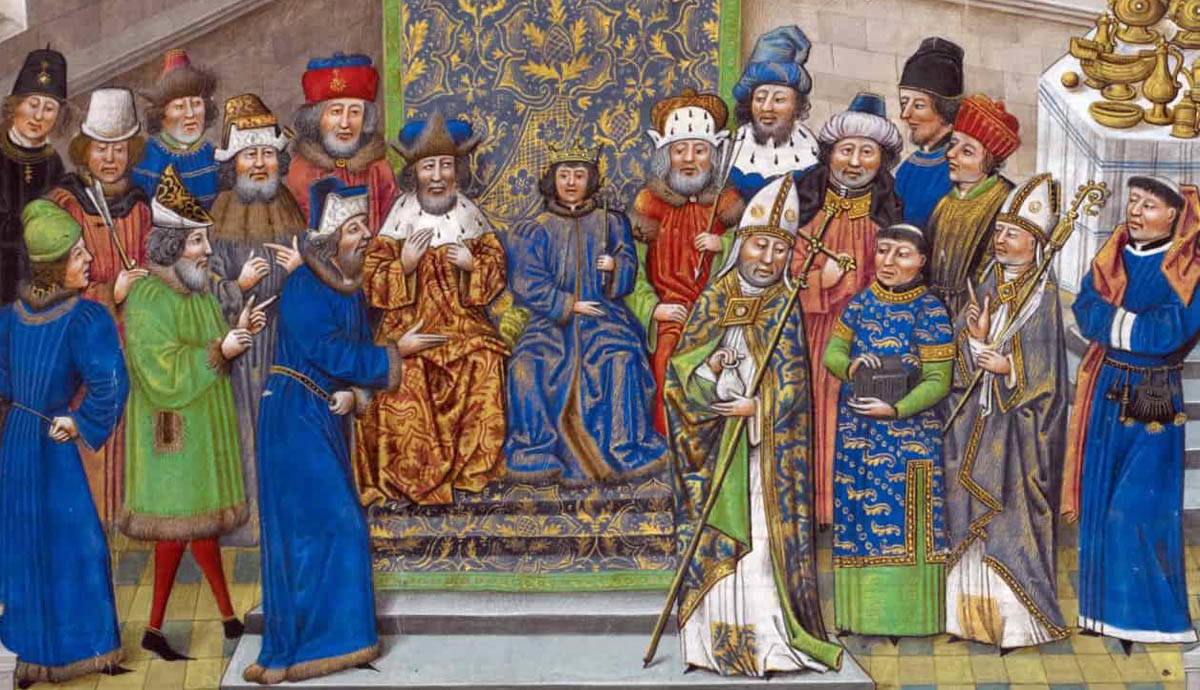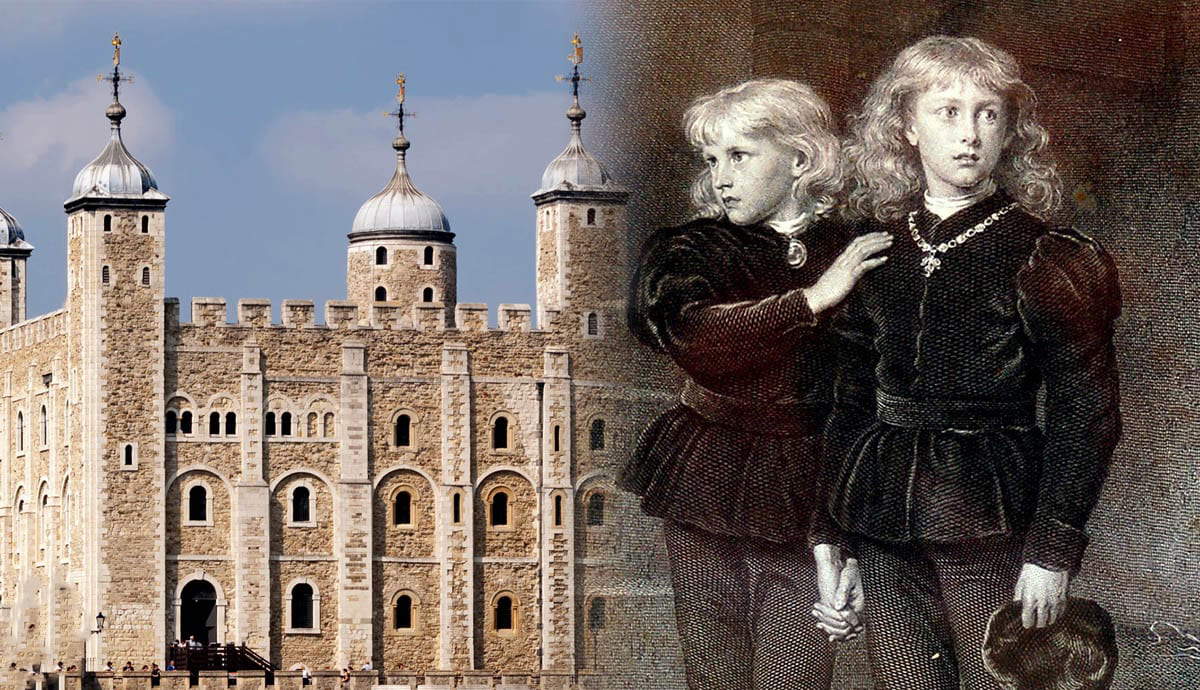
Richard II (r. 1377-99) was the final Plantagenet monarch whose direct descendants could be traced back to Henry II, who came to the throne in 1154. Richard’s turbulent reign saw major events such as the Peasants’ Revolt and the usurpation of the throne, which ultimately ended the Plantagenet Dynasty.
Richard II’s Early Life

Richard II (r. 1377-99) was born to Edward, the Black Prince and his wife Joan, Countess of Kent on 6th January 1367, in Aquitaine, France. He was their youngest son, and he had one older brother who was also called Edward. From the onset of his life, Richard was a spoiled child; he even had a set of dice loaded so that he always won (David Starkey, Crown & Country – The Kings & Queens of England: A History, 2011). Yet even before Richard was crowned as the eighth Plantagenet king of England, family divisions had already erupted. Ultimately, this paved the way for what was to eventually become the Wars of the Roses, a conflict that formally ended over a century after Richard’s coronation.
During the reign of Edward III (Richard II’s grandfather), the future of the Plantagenet Dynasty had already been discussed. Naturally, the reign was to be handed to the Black Prince, Edward III’s eldest son. However, upon the Black Prince’s death from dysentery on 8th June 1376, Edward’s three other sons argued that they all had a legitimate claim to the throne as the next in line, as Richard (the Black Prince’s eldest surviving son at this point) was still a boy.

But why were Edward’s other sons (John of Gaunt, Lionel, and Edmund) concerned about the boy king? Well, almost two hundred years before the Black Prince’s untimely death, the boy King Henry III had been crowned as the fourth Plantagenet king, aged just nine years old. Henry’s reign was not exactly a tumultuous one, and he ended up reigning for 56 years — and it was surely a sign of stability to have one monarch on the throne for so long in the Middle Ages! However, the main problem with Henry’s early reign were those around him, which is exactly what Richard’s uncles were worried about.
Two of Henry III’s main advisors — Hubert de Burgh and Peter des Roches –— fought for control of the boy king so that they could pass their own laws through the king for both personal and political gain. It was a messy start to the reign, but when Henry came of age, he managed to stabilize the country and reign relatively peacefully.
Naturally, if this situation of having a boy king manipulated by his advisors could be avoided, it was for the best. John of Gaunt was the next eldest son after the Black Prince, and during his reign, Edward III had taken the initiative to make both Richard and Henry Bolingbroke (John of Gaunt’s son) Knights of the Garter. This meant that both the young Richard and Henry Bolingbroke had to vow to never fight against each other. The reason Edward III took this initiative before his death was because, with John of Gaunt being the next eldest son, he was the most likely to usurp Richard’s reign.
Richard II’s Early Reign: 1377-81

Richard was crowned on 16th July 1377 at Westminster Abbey. One of his first initiatives as king (or rather, one of the first initiatives from his advisors) was to introduce a poll tax. England was still recovering from the economic impact of the Black Death, and the crown’s resources were running low.
Thanks to England’s continuous involvement in the ongoing Hundred Years’ War in France, the Crown desperately needed more money. There were three poll taxes introduced in total, the first in 1377 and the final one in 1381. Ultimately, it was the poll tax of 1381 that was the “tax that broke the camel’s back” (Paul James, A Royal History of England: 62 Monarchs and 1,200 Years of Turbulent English History, 2021).
The effect of the poll tax weighed much heavier on those with less income and led to the infamous Peasants’ Revolt.
The Peasant’s Revolt: 1381

One major factor of the Peasants’ Revolt, which is a common misconception, is that the rebels targeted Richard II. This is incorrect; the rebels instead targeted the nobility around Richard, as they felt it was unfair that they were being taxed the same amount as noble families who earned hundreds of times more than them. The peasants were instead after taxation reform.
Led by a man from Kent called Wat Tyler, the rebels marched into London and pillaged the capital city from May to November 1381. For security purposes, Richard II, his mother, and his cousin Henry Bolingbroke were sheltered in the Tower of London. Yet, surprisingly, the fourteen-year-old Plantagenet King Richard II left the Tower and confronted the rebels face to face at Mile End with a small entourage.
He addressed Tyler and the other leaders as his “brothers”, and asked why they had not gone home yet. Richard offered the rebels a charter of liberties, and as the rebels began to disperse, the Mayor of London made a huge mistake. He undermined Richard by attacking and murdering Wat Tyler.
Richard reacted quickly — he took attention away from the murdered Tyler, and shouted to the rebels, “I am your leader, follow me”. Incredibly, the rebels — most likely because they were in shock — followed Richard away from the center of the confrontation so that a full-scale battle was no longer possible.
However, the rebels were now away from London and leaderless. Richard’s entourage and the London militia easily dispersed them. Richard’s appearance as a mature young man had vanished, and he was no longer viewed as a friend of the common people. Instead, he was perceived as a manipulative teenager. This image of Richard was to tarnish the rest of his reign.
Richard II’s Extravagance

Like his great-grandfather Edward II, Richard was keen to give his favorites positions of power in Parliament. This had not worked out for Edward II, and Richard was sternly reminded of this by his advisors on numerous occasions. Of course, Richard ignored this advice, and his Parliament became a hotbed of Richard’s favorites, who were naturally a bunch of yes-men.
All of the efforts that Edward III had put into creating a stable government were ruined by Richard, and it was one of the reasons for the downfall of the Plantagenet Dynasty. Richard II’s court was a high-tax, high-spend affair. It was even reported that on a 1396 trip to France, he spent £150,000 on clothes for his wardrobe (Paul James, A Royal History of England: 62 Monarchs and 1,200 Years of Turbulent English History, 2021).
Richard’s Quarrels with Parliament

Parliament had eventually had enough of Richard’s excessive spending. They agreed to help Richard II financially and militarily (by the mid-1380s there was a very real threat of a French invasion on English shores) if he dismissed his favorites from court. Richard, aged twenty, retorted like a petulant child, stating that he would not listen to Parliament if they asked him to dismiss his kitchen scullion and that he would even invite the French to help him fight against the Parliamentarians.
When he was offered genuine help, Richard turned his nose up against it. He finally surrendered to Parliament and stormed off on a tour of his kingdom. But this was not a way of easing his temper — he was touring the country to garner support for his cause against the Parliamentarians. Naturally, Parliament had realized this was the case, and already had an idea in mind: they would also elect a leader for their cause. Their choice? A young man Richard’s age called Henry Bolingbroke.
Final Battles: Richard and Henry Bolingbroke

Over a decade after the two cousins had sworn to never take arms up against each other, tensions began to rise. The two men were vastly different characters and they clashed due to political differences. Richard II believed that a king was God on Earth, whereas Henry believed a king should be a first among equals.
Richard’s army and Henry’s forces met just outside Oxford at Radcot Bridge on 19th December 1387. Henry’s forces were victorious, and the downfall of the Plantagenet Dynasty had just begun.
Richard II had hidden in the Tower of London when he heard the news that Henry’s forces were victorious (Richard had not even been present at Radcot Bridge in contrast to Henry who had personally led his troops in the battle). There was no other option for the last Plantagenet but to surrender in humiliation.
But Richard was not going to give up his power that easily. He bided his time and when he was aged 22, he marched into Parliament and convinced them that he had matured from a boy into a man. He used the help from his uncle John of Gaunt to pacify the country, and treat his former Parliamentarian enemies with mercy. But Richard II’s hatred soon crept back. He slowly began to exile his former enemies on hugely exaggerated charges of treason, and he eventually also exiled Henry Bolingbroke for the same reason.

When in Paris in exile in 1399, Henry Bolingbroke learned of his father’s death. He had also heard that Richard II had wasted no time in seizing John of Gaunt’s lands — which were rightfully Bolingbroke’s inheritance. Henry immediately left France and landed on the Yorkshire coast with a fleet of ten ships.
Richard II immediately fled to Wales and took refuge in Flint Castle, one of Edward I’s great Welsh fortresses. Henry knew that Richard had fled to Wales, and eventually persuaded him to come out of hiding on the pretense that he was not back in England to steal the crown, but rather to simply claim his inheritance that Richard had stolen from him. This persuasion worked, and Richard emerged from Flint Castle, only to be ambushed by Henry’s men and taken prisoner.
Richard II and the Untimely End of the Plantagenet Dynasty

Richard, having no legitimate children as heirs, abdicated his throne to God. Henry took the empty throne for himself, crowning himself as Henry IV of England. However, despite Richard’s abdication as king, he was still an anointed monarch. Henry IV knew from Richard’s last stint in exile that he was not to be trusted and the only way to ensure that he could safely rule was to kill the Plantagenet. He left Richard as a prisoner in Pontefract Castle, where he died in early 1400 of starvation.
The Plantagenet dynasty had finally ended. Almost 250 years of direct descendants (including grandsons), from Henry II in 1154 to Richard II was at an end, and in the hands of a man who was more of a petulant child than a king.
No other dynasty in the Middle Ages held as much power as the Plantagenets at their peak, and no other dynasty would come close for hundreds of years. Over the course of the next century following Richard II’s death, there were seven kings, compared to the eight Plantagenet monarchs of the last 250 years. The effect of the usurpation made way for one of English history’s bloodiest civil conflicts: The Wars of the Roses.










